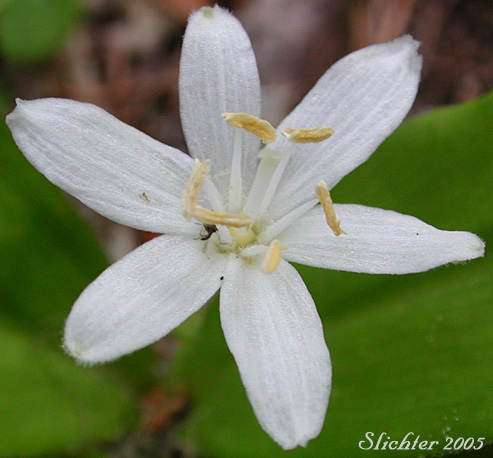 The
photo at right shows the bluish berry of queen's cup as seen from the Island Springs Trail on Mt. Adams in the southern Cascade Mts. of Washington.
The
photo at right shows the bluish berry of queen's cup as seen from the Island Springs Trail on Mt. Adams in the southern Cascade Mts. of Washington.
Queen's cup is an attractive perennial wildflower which spreads via underground rhizomes. The two to three leaves are basal, elliptic or oblong in shape and measuring 7-15 cm long and up to 5 cm wide. The blades are paler below, and lack any hairs on the surface of the blade, although some short ciliate hairs may be found along the margins. The scape is generally one flowered, although two are possible. The scape generally measures from 7-11 cm high.
The flowers are white and star-like when seen from above. The 6 tepals (sepals and petals) are similar in shape and are about 2 cm long. The bloom time of queen's cup is May through July. The 6 stamens are much shorter than the tepals and have creamy white or yellowish anthers which are perpendicular to the axis of the filaments. The pistil develops into a blue, roundish berry after pollination, giving its second name of "bead lily". The berry measures 6-10 mm long.
Queen's cup is a wildflower of moist coniferous forests from intermediate to high elevations.
Queen's cup is found from Alaska south into California, from the Pacific coast into the Cascade Mts. It is found eastward to southwestern Alberta and south through Montana and Idaho to eastern Oregon.